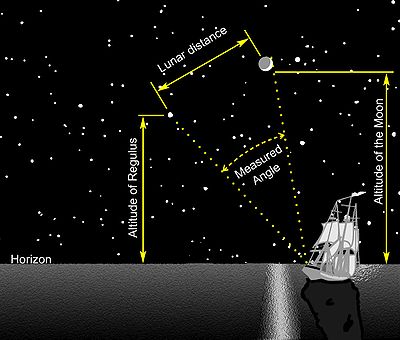
Back Distància lunar Catalan Monddistanz German Distancia lunar Spanish שיטת המרחק הירחי HE 月角距 Chinese

In celestial navigation, lunar distance, also called a lunar, is the angular distance between the Moon and another celestial body. The lunar distances method uses this angle and a nautical almanac to calculate Greenwich time if so desired, or by extension any other time. That calculated time can be used in solving a spherical triangle. The theory was first published by Johannes Werner in 1524, before the necessary almanacs had been published. A fuller method was published in 1763 and used until about 1850 when it was superseded by the marine chronometer. A similar method uses the positions of the Galilean moons of Jupiter.
© MMXXIII Rich X Search. We shall prevail. All rights reserved. Rich X Search